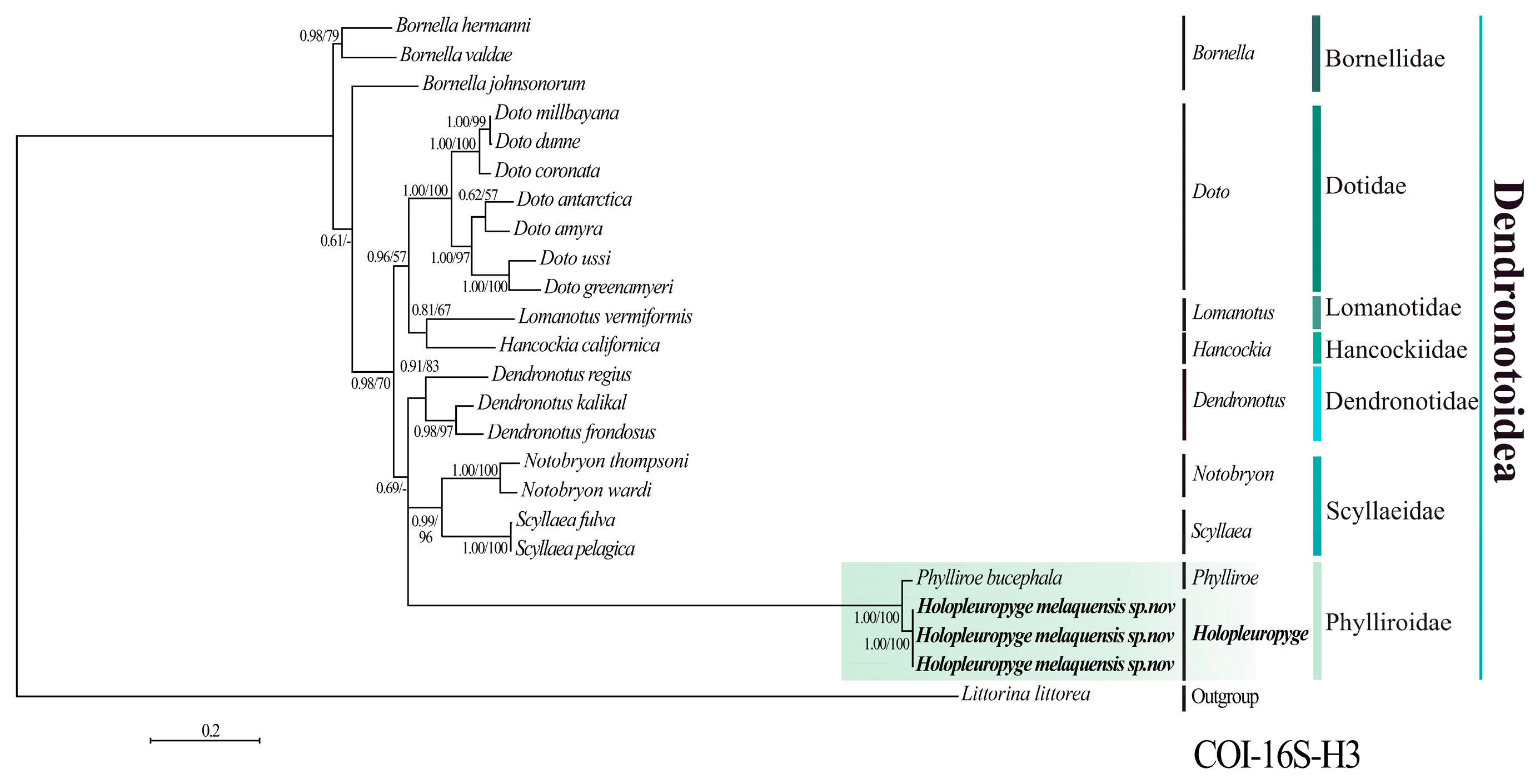Correction: Santiago-Valentín et al. A New Holoplanktonic Nudibranch (Nudibranchia: Phylliroidae) from the Central Mexican Pacific. Diversity 2025, 17, 479
Text Correction
References
- Santiago-Valentín, J.D.; Bautista-Guerrero, E.; Kozak, E.R.; Pelayo-Martínez, G.; Franco-Gordo, C. A New Holoplanktonic Nudibranch (Nudibranchia: Phylliroidae) from the Central Mexican Pacific. Diversity 2025, 17, 479. [Google Scholar] [CrossRef]
- Schrammen, A. Die Kieselspongien der oberen Kreide von Nordwestdeutschland. II. Teil: Triaxonia (Hexactinellida). Palaeontographica 1912, 5, 176–385. [Google Scholar]

Disclaimer/Publisher’s Note: The statements, opinions and data contained in all publications are solely those of the individual author(s) and contributor(s) and not of MDPI and/or the editor(s). MDPI and/or the editor(s) disclaim responsibility for any injury to people or property resulting from any ideas, methods, instructions or products referred to in the content. |
© 2025 by the authors. Licensee MDPI, Basel, Switzerland. This article is an open access article distributed under the terms and conditions of the Creative Commons Attribution (CC BY) license (https://creativecommons.org/licenses/by/4.0/).
Share and Cite
Santiago-Valentín, J.D.; Bautista-Guerrero, E.; Kozak, E.R.; Pelayo-Martínez, G.; Franco-Gordo, C. Correction: Santiago-Valentín et al. A New Holoplanktonic Nudibranch (Nudibranchia: Phylliroidae) from the Central Mexican Pacific. Diversity 2025, 17, 479. Diversity 2025, 17, 620. https://doi.org/10.3390/d17090620
Santiago-Valentín JD, Bautista-Guerrero E, Kozak ER, Pelayo-Martínez G, Franco-Gordo C. Correction: Santiago-Valentín et al. A New Holoplanktonic Nudibranch (Nudibranchia: Phylliroidae) from the Central Mexican Pacific. Diversity 2025, 17, 479. Diversity. 2025; 17(9):620. https://doi.org/10.3390/d17090620
Chicago/Turabian StyleSantiago-Valentín, Jeimy D., Eric Bautista-Guerrero, Eva R. Kozak, Gloria Pelayo-Martínez, and Carmen Franco-Gordo. 2025. "Correction: Santiago-Valentín et al. A New Holoplanktonic Nudibranch (Nudibranchia: Phylliroidae) from the Central Mexican Pacific. Diversity 2025, 17, 479" Diversity 17, no. 9: 620. https://doi.org/10.3390/d17090620
APA StyleSantiago-Valentín, J. D., Bautista-Guerrero, E., Kozak, E. R., Pelayo-Martínez, G., & Franco-Gordo, C. (2025). Correction: Santiago-Valentín et al. A New Holoplanktonic Nudibranch (Nudibranchia: Phylliroidae) from the Central Mexican Pacific. Diversity 2025, 17, 479. Diversity, 17(9), 620. https://doi.org/10.3390/d17090620




